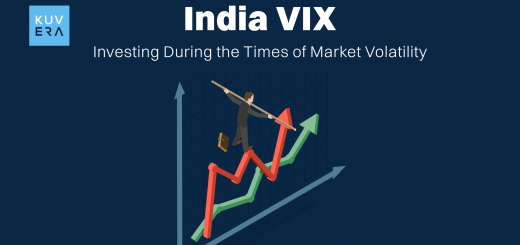Have you heard about GIFT Nifty and wondered what it’s all about? It definitely has something to do with the Nifty, but there’s more to it. Let’s dive in to understand what GIFT Nifty is, how it works, and why it’s becoming a big deal.
GIFT Nifty stands for Gujarat International Finance Tec-City Nifty. Also known as GIFT Nifty Index, it is a derivative index launched by the National Stock Exchange (NSE) in India. It is traded on the NSE IFSC (International Financial Services Centre) at GIFT City, a special economic zone for financial services. The GIFT Nifty is designed to track the performance of the Nifty 50 Index but is specifically listed and traded in the GIFT City.
In 1996, the NSE introduced the Nifty 50, an index consisting of 50 major Indian companies, following which derivatives such as futures contracts based on the Nifty 50 were launched. The SGX Nifty emerged as a derivative contract traded on the Singapore Stock Exchange. It allowed foreign investors to trade on Indian market movements in dollars, facilitating their participation without directly dealing with the Indian rupee. This initiative was partly due to India’s nascent financial reputation at the time, which led to a partnership with Singapore, a well-established financial hub.
However, this arrangement primarily benefited Singapore rather than India.
Start investing in Index Funds.
To address this, the GIFT Nifty was introduced to redirect the trading volume back to India. GIFT Nifty is now part of GIFT City, an exclusive financial centre offering incentives to foreign businesses. This shift aims to consolidate regulatory oversight and enhance GIFT City’s appeal as a global financial hub.
As of 30 June 2024, the SGX Nifty ceased operations and trading of GIFT Nifty began on 3 July 2024 on the GIFT/NSE IFSC. GIFT Nifty offers extended trading hours of over 21 hours daily, catering to investors across various time zones.
Thus, GIFT Nifty Index is essentially a variant of the Nifty 50 Index, providing a way to invest in the same 50 large-cap Indian companies listed on the Nifty 50 but through a platform in GIFT City, offering a similar exposure to the Indian stock market as the Nifty 50 but with certain benefits specific to international investors.
Tracking various indices and stocks regularly? Look at top gainers, top losers and 52W high and 52W low stocks regularly with Kuvera.
Eligibility
NRIs, Foreign Portfolio Investors (FPIs) and Eligible Foreign Investors (EFIs) are eligible to trade through a broker, a member of the NSE IX. Retail investors residing in India are not permitted to trade in the GIFT Nifty due to foreign exchange regulations.
Benefits of GIFT Nifty
1. Tax Advantages
GIFT City is designed to attract international financial services by offering a range of tax incentives and regulatory advantages, making it an attractive option for investors looking to avoid higher tax liabilities on gains. These include tax exemptions and reductions, simplified regulations and adherence to international standards. The aim is to create an attractive environment for global investors and financial institutions, fostering growth and investment while streamlining financial operations.
2. Global Exposure
GIFT Nifty offers international investors an efficient and regulated gateway to the Indian equity market through the GIFT City financial hub. It combines exposure to the Nifty 50 Index with the benefits of trading in a globally recognised and strategically located financial centre.
3. Currency Benefits
Trading in GIFT Nifty can facilitate easier currency conversion and financial transactions for international investors as it is settled in US dollars (or other foreign currencies).
4. Regulatory Environment
GIFT City’s regulations are more flexible than those of other Indian financial markets, with fewer restrictions on foreign ownership and investment. It serves as a “one-stop-shop” for financial services such as banking, insurance, asset management, and trading. This centralisation simplifies compliance, streamlines registration and approval processes, and reduces bureaucratic red tape, making it easier for international businesses to operate.
5. Increased Liquidity
GIFT Nifty boosts market participation by attracting international investors, which enhances liquidity and trading volumes. This increased participation leads to tighter bid-ask spreads, lowering trading costs and improving market efficiency. Greater order flow from global investors deepens the market, allowing larger transactions with minimal price impact. Overall, this increased depth and liquidity contribute to more stable and transparent pricing, reducing volatility and benefiting all market participants.
Want to invest in FD? You can check for various FD rates for banks and NBFCs in the Kuvera portal. Explore now to choose.
How to Trade GIFT Nifty?
Step 1: Account Setup
To trade GIFT Nifty, open an account with a broker or financial institution which is registered with the NSE IX. This involves submitting identity and address proofs as per the broker’s regulations. It is essential to ensure that the chosen trading platform is user-friendly, reliable and offers the features required for trading activities.
Step 2: Fund the Account
Deposit funds into the trading account to have the necessary margin for trading in Gift Nifty derivatives. This involves understanding margin requirements, choosing an appropriate payment method, following broker instructions and confirming that the funds are properly credited.
Step 3: Choose Trading Platform
Once the account is set up, trading in GIFT Nifty can be done through the trading platforms provided by the broker. Popular options include Zerodha, Motilal Oswal, Anand Rathi etc. These brokers offer dedicated GIFT City trading accounts.
Step 4: Trading Hours
One needs to be aware of the trading hours specific to the GIFT City markets. They may differ from the regular Indian stock market hours and can be influenced by international trading hours. GIFT NIFTY trades in two sessions:
- Session 1: 6:30 AM to 3:40 PM IST
- Session 2: 4:35 PM to 2:45 AM (following morning) IST
Step 5: Understanding the Market
Becoming familiar with the Gift Nifty market before trading is essential. It includes analysing its dynamics, trends and factors that influence price movements. An investor should conduct thorough research and analysis using tools and resources available on the chosen trading platform.
Step 6: Developing Trading Strategy and Managing Risk
A trading strategy that aligns with an investor’s risk tolerance, investment goals and time horizon needs to be thought through. One should consider factors such as entry and exit points, position sizing and risk management techniques. To manage risk effectively, one must implement risk management techniques to protect your capital and minimise potential losses by setting stop-loss orders, diversifying positions and avoiding over-leveraging.
Step 7: Transaction Costs
It is essential to understand all associated transaction costs, including brokerage fees, taxes, exchange fees, currency conversion costs, and any miscellaneous charges. Each of these factors can impact your overall trading costs and potential returns. By being aware of these costs and choosing the most cost-effective options, one can optimise your trading strategy and improve your investment outcomes.
Step 8: Regulatory Compliance
Ensure compliance with any regulatory requirements specific to trading in GIFT City. This involves understanding the relevant framework, completing the necessary documentation, adhering to compliance checks and staying informed about regulatory updates.
Step 9: Place Orders and Monitor
Once the trading strategy is in place, orders can be placed in Gift Nifty derivatives, such as futures and options, depending on investor’s preference and market outlook. It is essential to monitor market developments in real-time and stay updated on news, events and announcements that may impact prices, which may require adjusting trading strategies accordingly.
Step 10: Review and Manage
Regular review of trading performance and analysis of the outcomes of trades should be done to identify strengths and weaknesses in the trading approach so that necessary adjustments can be made timely.
Wrapping Up
GIFT Nifty is a Nifty 50 index-based futures trading contract launched on the National Stock Exchange (NSE) in India and is traded on the NSE IFSC (International Financial Services Centre) at GIFT City. The GIFT Nifty is designed to track the performance of the Nifty 50 Index but is specifically listed and traded in the GIFT City. Like any other index, it is embedded with diversification.
Interested in how we think about the markets?
Read more: Zen And The Art Of Investing
Watch here: Investing In Passive Funds
Start investing through a platform that brings goal planning and investing to your fingertips. Visit kuvera.in to discover Direct Plans of Mutual Funds and Fixed Deposits and start investing today.
AREVUK Advisory Services Pvt Ltd | SEBI Registration No. INA200005166
DISCLAIMER: Mutual Fund investments are subject to market risks. Read all scheme related documents carefully. Registration granted by SEBI, membership of BASL (in case of IAs) and certification from NISM in no way guarantee performance of the intermediary or provide any assurance of returns to investors. Investments in securities market are subject to market risks. Read all the related documents carefully before investing. The securities quoted are for illustration only and are not recommendatory.












